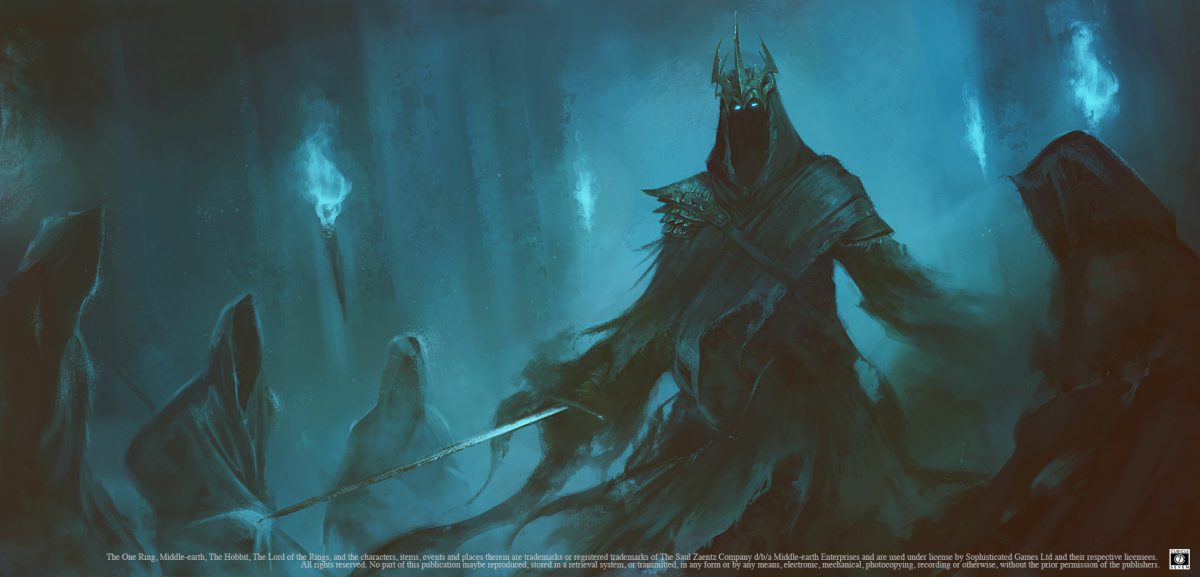
The One Ring, the RPG written by Cubicle 7 from the ground-up for your adventures in Tolkien’s Middle Earth, is getting a second edition. But the very first thing the folks at Cubicle 7 will tell you, after breaking the news, is that the second edition of The One Ring will be fully backwards-compatible with the first.
So why even publish a new edition? Largely to clean things up. Incorporating additional material from the numerous supplements for the game expands the options for player characters to eleven Cultures and six Callings. There’s also been the expected streamlining and incorporation of popular “house rules,” all integrated by the skilled rules-smith of the original game, Francesco Nepitello.
Among the changes is a transformation in how Target Numbers work. Before, the number was generated by the GM to represent how difficult a task was. Now, it’s based on the player character’s attributes. The GM then only has to apply a modifier based on difficulty, making things much easier for the GM. In addition, certain Skills can be designated as Favoured for the character, giving them a built-in bonus when such Skills are invoked. The goal here is to front-load as much of the math as possible during character creation, so during the heat of play everyone can just consult the sheet and apply some simple modifiers when needed.

The new calling is the Captain. It’s based on the Leader calling from the Adventurer’s Companion. Callings also now have Aspirations and Weaknesses. These are the dark and light sides of what lead your character to a life of adventure and can gain you additional Hope points or Shadow gain, depending on what is encountered and how your character deals with it. For instance, failing a Corruption test that is related to your character’s Weakness gains you 2 Shadow points instead of the usual 1. The Shadow Weakness of the 1st edition is now a Shadow Path with four Flaws. If your character acquires all four Flaws, they are lost to the Shadow entirely.
The Journey sequence has been simplified so that players won’t have to roll so many dice. Fatigue, for instance, is now calculated at the end of the Journey and is affected by how far you went, where you went, the season you travelled in, and what events the GM rolled up during your journey. Encounters are now Councils, and the rules governing them are to be applied during great events, when the PCs encounter important personages like Gandalf or Elrond. When haggling over the price of fish or chatting up the barkeep at the Prancing Pony, GMs are encouraged to use roleplaying and the usual Skills.

Stances still exist in combat, and more aggressive stances grant you bonus dice in an attack. Rally Comrades gives your allies additional attack dice as well now. The core book also includes rules for mounted combat and traveling with horses, as well as on boats and journeying over the sea, all of which before had been found in various supplements.
Finally, the 2nd edition of The One Ring advances the timeline to 2965. The optimism that had sprung up with the death of Smaug has been nearly exhausted. The focus of further supplements will move southward, into Gondor and beyond. The Third Age is in its twilight, Shadow gathers its strength, and the stage is being set for the War of the Ring.
If you’ve been a fan of The One Ring, you’ll appreciate how rules that had been scattered through various supplements are now gathered together into the core rulebook. You’ll also find a number of little tweaks the folks at Cubicle 7 call “quality of life” changes that will make the game easier to play. If you’ve never experienced The One Ring rpg before, now is a great time to take a look at it. In either case, talk to the RPG experts at your local Dragon’s Lair Comics and Fantasy® about pre-ordering your copy today.




